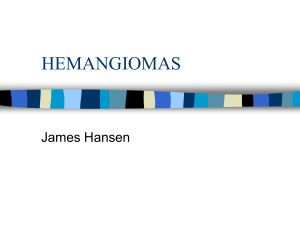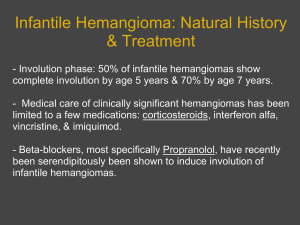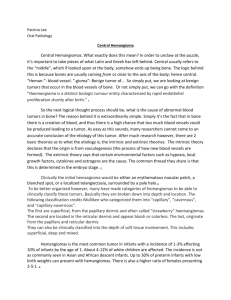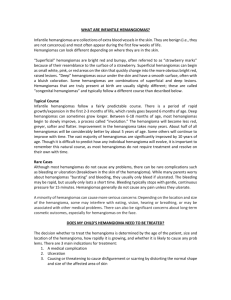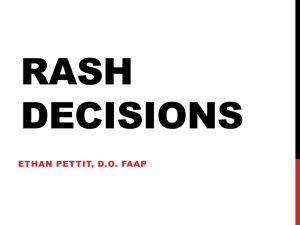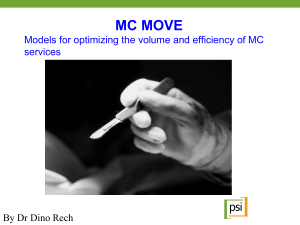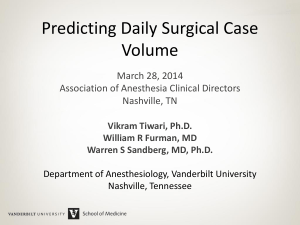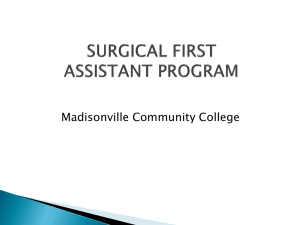Surgical Management of Amblyogenic Periorbital Hemangiomas
advertisement
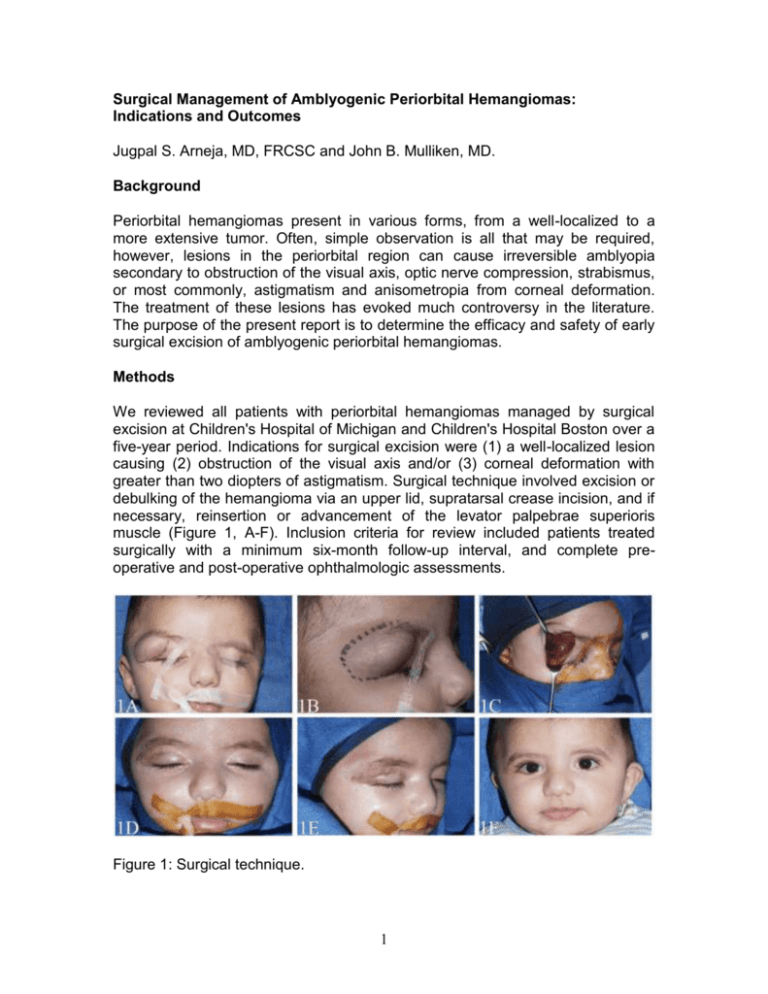
Surgical Management of Amblyogenic Periorbital Hemangiomas: Indications and Outcomes Jugpal S. Arneja, MD, FRCSC and John B. Mulliken, MD. Background Periorbital hemangiomas present in various forms, from a well-localized to a more extensive tumor. Often, simple observation is all that may be required, however, lesions in the periorbital region can cause irreversible amblyopia secondary to obstruction of the visual axis, optic nerve compression, strabismus, or most commonly, astigmatism and anisometropia from corneal deformation. The treatment of these lesions has evoked much controversy in the literature. The purpose of the present report is to determine the efficacy and safety of early surgical excision of amblyogenic periorbital hemangiomas. Methods We reviewed all patients with periorbital hemangiomas managed by surgical excision at Children's Hospital of Michigan and Children's Hospital Boston over a five-year period. Indications for surgical excision were (1) a well-localized lesion causing (2) obstruction of the visual axis and/or (3) corneal deformation with greater than two diopters of astigmatism. Surgical technique involved excision or debulking of the hemangioma via an upper lid, supratarsal crease incision, and if necessary, reinsertion or advancement of the levator palpebrae superioris muscle (Figure 1, A-F). Inclusion criteria for review included patients treated surgically with a minimum six-month follow-up interval, and complete preoperative and post-operative ophthalmologic assessments. Figure 1: Surgical technique. 1 Results Twenty-six patients met the inclusion criteria, with a mean hemangioma onset age of 1.0 months and mean operative age of 5.9 months. The majority of hemangiomas were subcutaneous and located in the upper lid, causing astigmatism (mean 3.09 diopters, range 1 to 5) in 88% of patients or blepharoptosis with obstruction of the visual axis in 46% of patients. Prior treatment in 54% of patients included corticosteroids, and/or patching. Postoperatively, a statistically significant improvement in the degree of astigmatism (mean 0.99 diopters, range 0 to 3) was observed (p-value < 0.001, Wilcoxon Rank-Sum Test). Reinsertion or advancement of the levator palpebrae superioris was required in 31% of patients. The mean follow-up interval was 31 months and complications were at a minimum. One patient had a local recurrence, not significant to warrant re-excision, one patient had residual astigmatism, and two patients exhibited residual blepharoptosis. Figures 2 (A, B) and 3 (A, B) represent patients managed with surgical excision, preoperatively and one year post-operatively. Figures 2 and 3: Surgical results (pre-operatively and one-year post-operatively) Conclusions To prevent potentially irreversible amblyopia in patients with periorbital hemangiomas, our results suggest early surgical excision to be efficacious, with infrequent complications, and a statistically significant improvement in the severity of corneal astigmatism. We advocate resection for well-localized periorbital hemangiomas, causing major refractive error with likelihood for the development of amblyopia, preferring to avoid in the majority of instances, intalesional corticosteroid injection, with its well-documented complication profile. 2 References Stigmar G, Crawford JS, Ward CM, Thomson HG. Ophthalmic sequelae of infantile hemangiomas of the eyelids and orbit. Am J Ophthalmol. 85:806-13, 1978 Haik BG, Jakobiec FA, Ellsworth RM, Jones IS. Capillary hemangioma of the lids and orbit: an analysis of the clinical features and therapeutic results in 101 cases. Ophthalmology. 86:760-92, 1979. Deans RM, Harris GJ, Kivlin JD. Surgical dissection of capillary hemangiomas. An alternative to intralesional corticosteroids. Arch Ophthalmol. 110:1743-7, 1992. Ruttum MS, Abrams GW, Harris GJ, Ellis MK. Bilateral retinal embolization associated with intralesional corticosteroid injection for capillary hemangioma of infancy. J Pediatr Ophthalmol Strabismus. 30:4-7, 1993. Walker RS, Custer PL, Nerad JA. Surgical excision of periorbital capillary hemangiomas. Ophthalmology. 101:1333-40, 1994. Drolet BA, Esterly NB, Frieden IJ. Hemangiomas in children. N Engl J Med. 15:173-81, 1999. Egbert JE, Paul S, Engel WK, Summers CG. High injection pressure during intralesional injection of corticosteroids into capillary hemangiomas. Arch Ophthalmol. 119:677-83, 2001. Geh JL, Geh VS, Jemec B, Liasis A, Harper J, Nischal KK, Dunaway D. Surgical treatment of periocular hemangiomas: a single-center experience. Plast Reconstr Surg. 119:1553-62, 2007. 3
